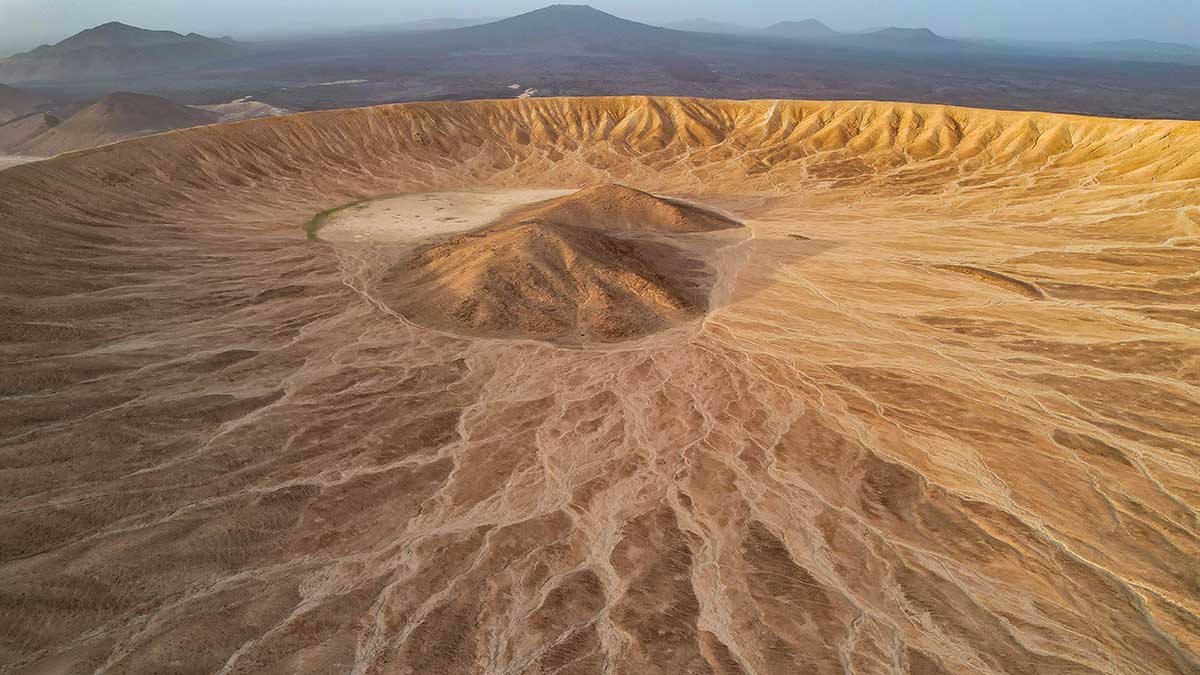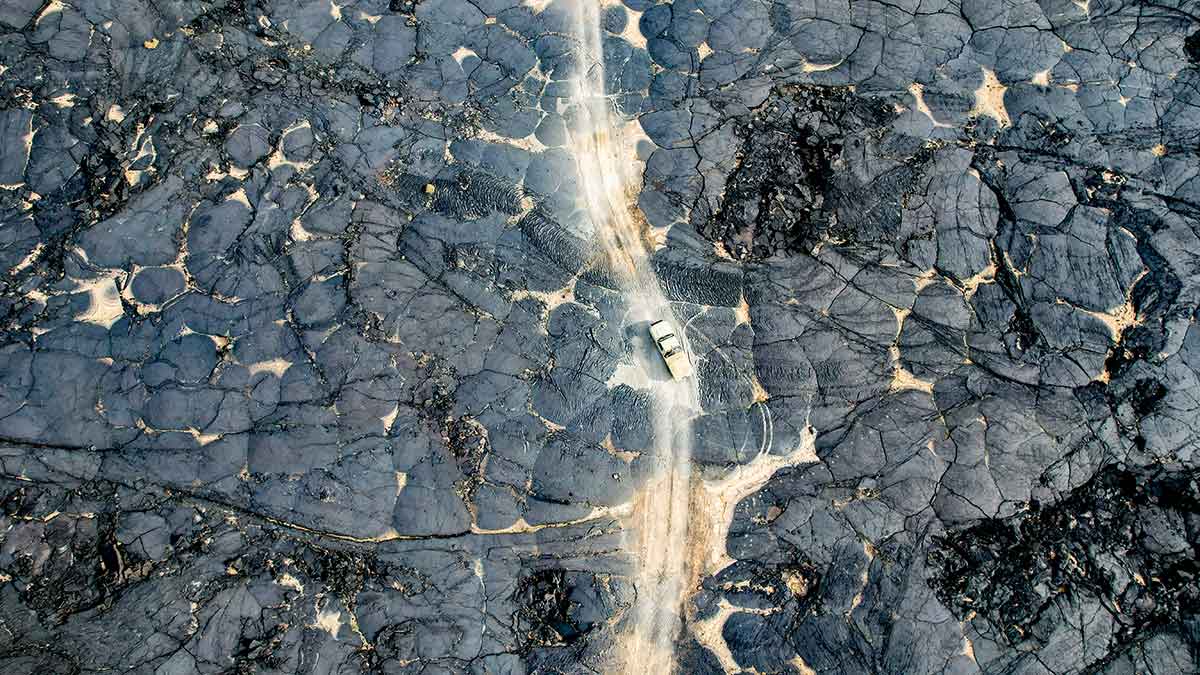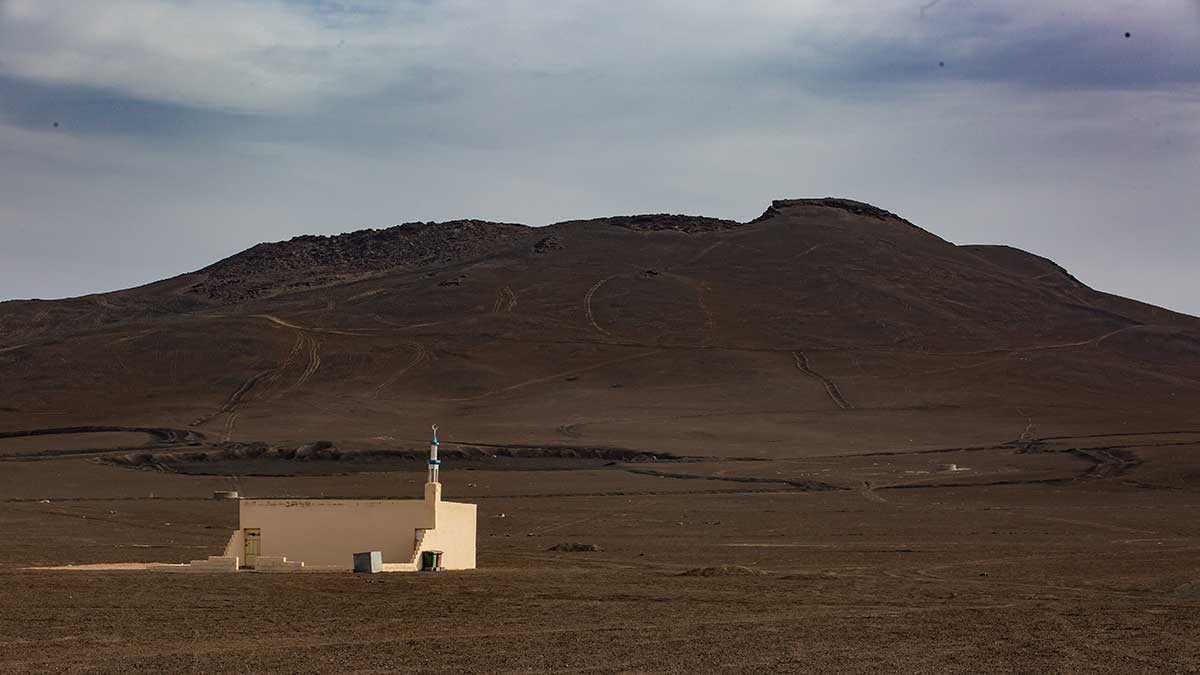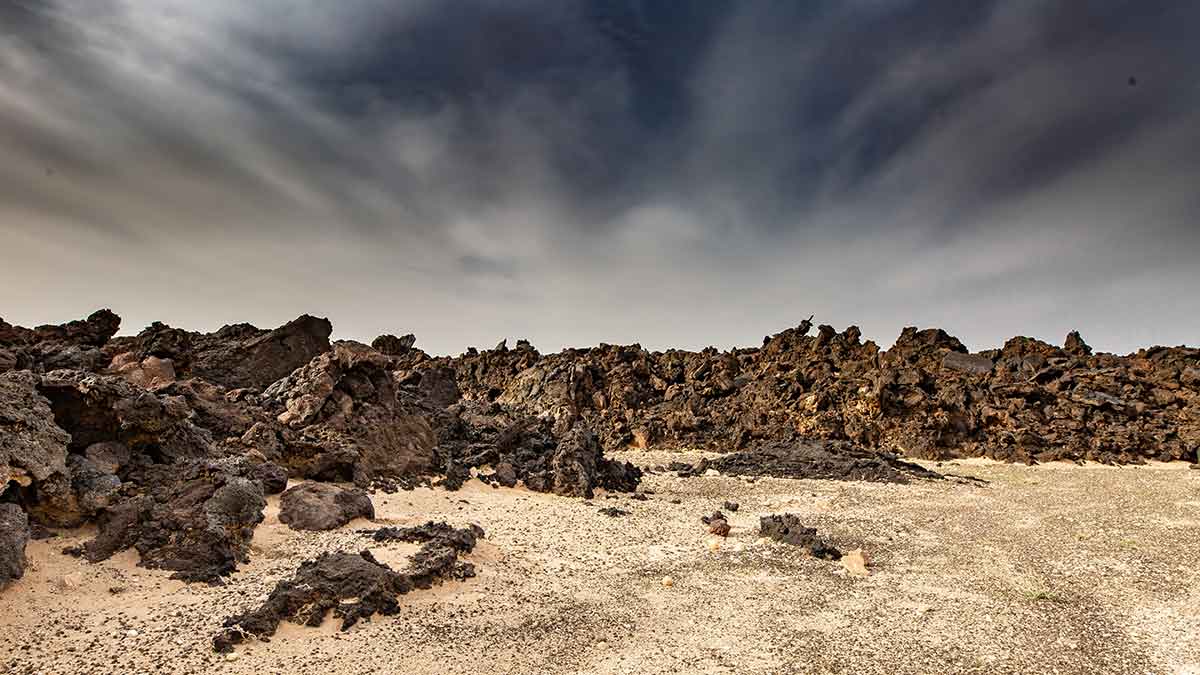Aramcon Travel
Aramcon Travel: Harrat Khaybar – the volcanic fields near Medina
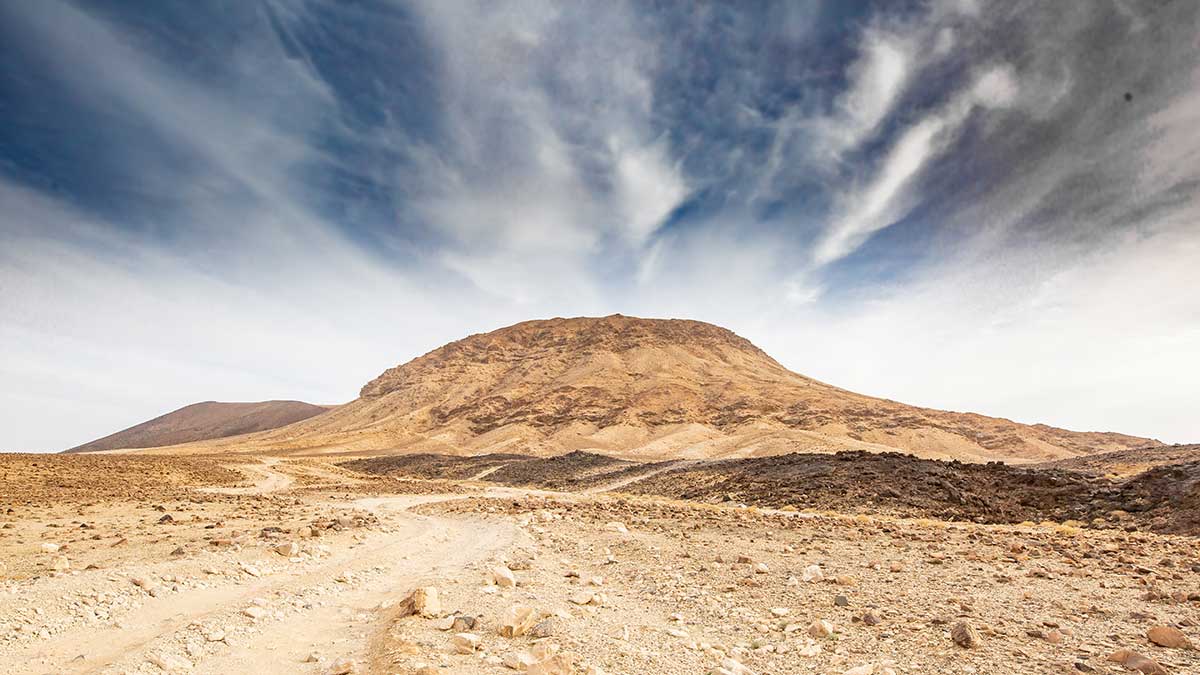
Global July 06, 2022 - By
Like no other place on Earth, this unique Saudi landscape is a contrast in light and darkness.
I first learned of Harrat Khaybar after reading a report about the discovery of Mustatil’s in the northwest region of Saudi Arabia.
Harrat Khaybar, literally the “volcanic fields of Khaybar” (and named so because of its vicinity to the city of Khaybar), is a volcanic field located about 150 km from the Holy City of Medina.
It covers an area of almost 14,000 km2 and was formed by volcanic eruptions along a 100 km system over the past 5 million years. That includes both black and white volcanoes.
The most recent eruption from these fields occurred in the post-Islamic era, around the 7th century. Driving into the fields was out of the question and my search led me to a tour company operating from Riyadh.
Guide
Although they were not running any tours to Harrat Khaybar, they connected me with a guide from Al Hait (not far from Madinah) who knew the area well.
I landed in Madinah on Friday morning and met Munawar my local guide, after Friday prayer.
The drive from Al Hait to the area was just over an hour and remains on a paved road until reaching the fields.
To enter the fields requires driving off road through its dark lapilli paved surface. As we entered the fields, our sights noticed something strange in the sky.
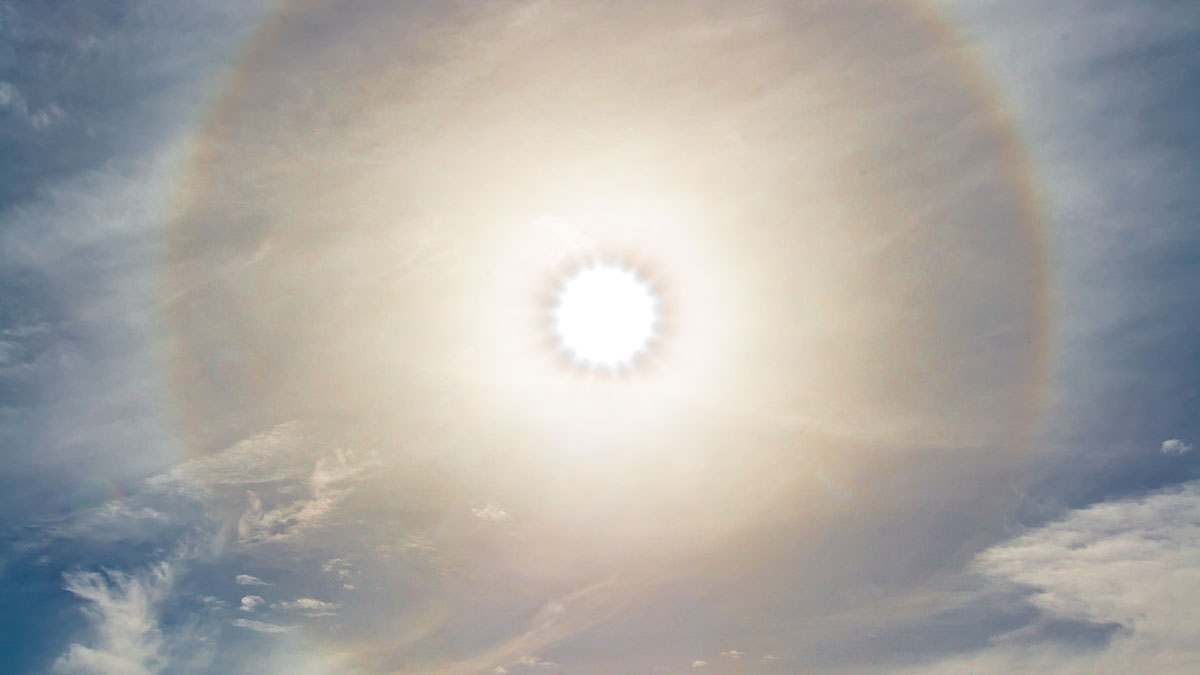
Optical phenomenon
Just above Jebel Qidr, which was sitting at a good distance from us, a round beam of a rainbow-colored ring had formed circling the sun. We were witnessing a Sun Halo, a rare optical phenomenon caused by light passing through suspended crystals in the clouds. This would be the first time we had witnessed this in our lives.
A cave near Harrat Khaybar
The most spectacular aspect of Harrat Khaybar is the contrasting colors of the land and volcanoes. Dark, basaltic lava flows turned the field and volcano to a black color. Jebel Qidr, Jebel Aqir, and many more are black volcanoes.
But, Harrat Khaybar is home to unique and rarer white volcanoes as well. The white volcanoes are formed by magma that is rich in silica forming the igneous rock comendite, a type of rhyolite.
This form of white igneous rock is quite rare. In addition to the comendite, these white volcanoes also produced obsidian, a dark grey volcanic glass. The obsidian was highly prized by the Neolithic people (10,000 to 4,500 BC) who mined it to make tools.
Two white volcanoes in Harrat Khaybar stand out. Jebel Abiadh (White Mountain), at 2,093 meters, is the highest volcano in Harrat Khaybar. Jebel Baydah (Baydah is feminine term for white) has the largest crater with a diameter of 1,500 meters.
Contrasting landscape
The route up is steep on loose gravel. From its broad but thin rim, one can witness the cinder cone within the crater itself and the stunning contrasting landscape of the entire field.
From the rim of this white volcano, we could see behind its vast crater, Jebel Aqir, a black volcano. Nowhere in the world would one find such a diverse geology.
The sun had gotten pretty low by the time we finished our excursion of Jebel Baydah. At this point we decided to return. The experience was almost surreal. The unique, raw geology found in Harrat Khaybar makes it feel like another planet.
